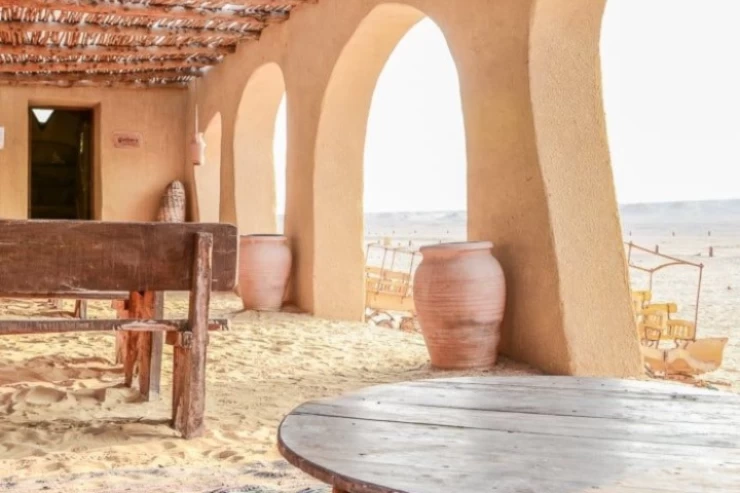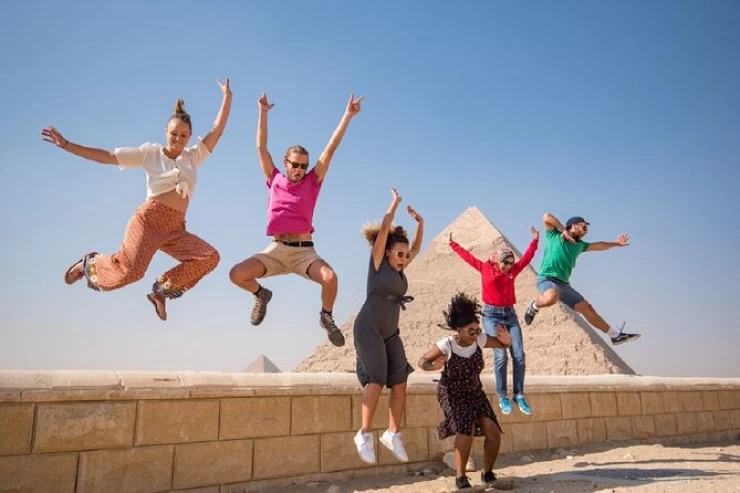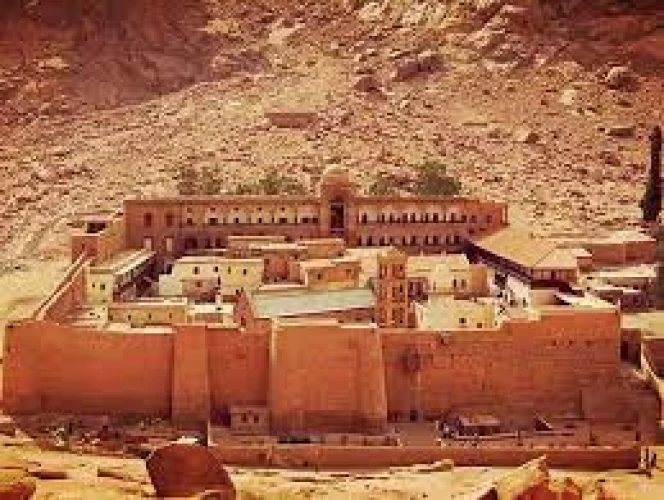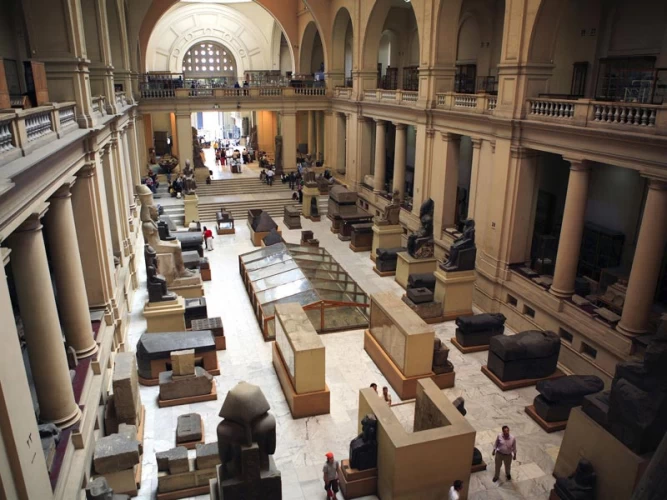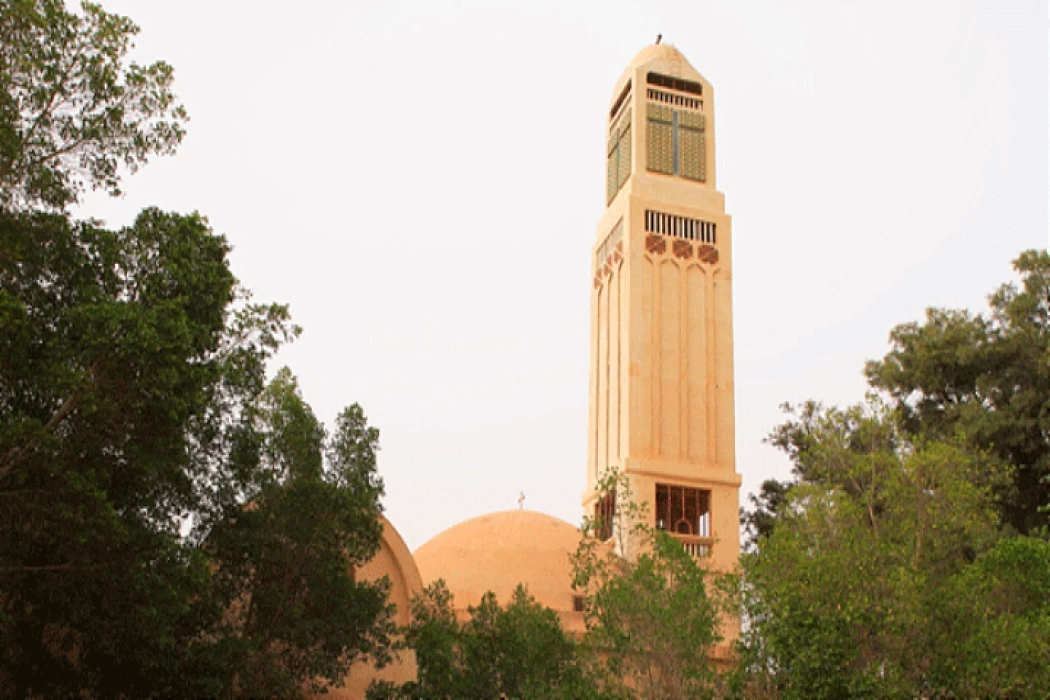
Wadi El-Natrun en Egipto
Wadi al-Natrun es una de las ciudades de la gobernación de Beheira, ubicada en las afueras del noreste del desierto occidental egipcio, a medio camino entre la carretera del desierto que une El Cairo y Alejandría, y frente a la ciudad de Sadat.
Wadi El-Natrun no es un valle en el sentido conocido, pero es bajo en el desierto occidental. Wadi El-Natrun limita al norte con el centro Abu al-Matamir y el centro Badr, y al este con la ciudad de Sadat, mientras que el centro de al-Hammam se encuentra en la gobernación de Matruh, al oeste de esta depresión, y finalmente al sur de ella se encuentra la ciudad del Seis de Octubre.
Esta zona llamada Wadi Al-Natroun fue de gran importancia durante la era de los faraones, ya que la sal se extraía de esta tierra y se llamaba sal del natrón conocida científicamente como bicarbonato de sodio. Puta, campo de sal y otros nombres similares.
También obtuvo una alta reputación santa en el cristianismo, como consecuencia del paso de la Sagrada Familia por él para escapar del rey Herodes hasta llegar a la primera congregación monástica en ella en el siglo IV d.C., de la mano de la gran sede que estableció el monasterio de Anba Makar y luego le siguieron otros tres monasterios, a saber, el Monasterio de Anba Bishoy y el Monasterio de El-Baramos y el Monasterio de Siria, hasta que el número de monasterios alcanzó los 700 monasterios en el valle hasta que comenzaron a reducirse hasta ahora sólo cuatro monasterios, mientras que el resto se perdieron, por lo que el valle es considerado una de las áreas sagradas más importantes para los seguidores de la Iglesia Ortodoxa Copta de Egipto.
El turismo en Wadi El-Natrun se concentra en muchos monumentos coptos, donde el monaquismo comenzó en pequeñas aldeas grabadas en las colinas, luego se impusieron las condiciones naturales a los ermitaños para establecer complejos convergentes, y a partir de aquí comenzó la idea de reunirse dentro de los monasterios para brindar protección de las incursiones bárbaras, ya que se establecieron fortalezas internas en cada monasterio y aún existen. Una lista existe hasta el momento, y un gran número de cristianos se han refugiado en ella para escapar de los agravios de los romanos. Después de la conquista islámica de Egipto, los monjes y Natron acudieron al líder árabe, Amr ibn al-Aas, por lo que les aseguró la vida y la libertad de culto y se encargó de proporcionarles lo que necesitaban.
El lago Hamra o Ayoub's así como lo llaman sus gentes atrae visitantes para el turismo médico porque se distingue por su alta salinidad y sus propiedades curativas específicamente para pacientes con enfermedades de la piel ... y este lago está ubicado en medio de la carretera del desierto que une las ciudades. de Alejandría y El Cairo en la región de Wadi Natrun.
El árido desierto abraza ese lago, que se caracteriza por una salinidad extrema. En medio de este lago, brota un ojo del que estalla una fuente del alimento más dulce y saludable con una capacidad milagrosa para curar enfermedades de la piel. Como resultado del flujo de esta agua dulce en este lugar extremadamente salado, se forma una placa de degradado de colores brillantes que anuncia el poder del Creador.
Con Cairo Top Tours, puede hacer los mejores viajes a los monasterios de Wadi El Natroun reservando tours Coptic Cairo desde El Cairo o Alejandría.
Wadi al-Natrun is one of the cities of Beheira Governorate, located on the northeastern outskirts of the Egyptian Western Desert, about halfway between the desert road linking Cairo and Alexandria, and facing the city of Sadat.
Wadi El-Natrun is not a valley in the well-known sense, but it is low in the Western Desert. Wadi El-Natrun borders to the north the Abu al-Matamir Center and the Badr Center, and to the east is the city of Sadat, while the center of al-Hammam is located in the Matruh Governorate, west of this depression, and finally to the south of it is the city of the Sixth of October.
This area called Wadi Al-Natroun was of great importance during the era of the Pharaohs, as the salt was extracted from this land and called the salt of the Natron known scientifically as sodium bicarbonate. Hooker, salt field, and other such names.
He also obtained a high holy reputation in Christianity, as a result of the passage of the Holy Family through him to escape from King Herod until he reached the first monastic congregation in it in the fourth century AD, at the hands of the great headquarters that established the monastery of Anba Makar and then followed by three other monasteries, namely the Monastery of Anba Bishoy and the Monastery of El-Baramos and the Monastery of Syrian, until the number of monasteries reached 700 monasteries in the valley until they started shrinking to now only four monasteries, while the rest were lost, so the valley is considered one of the most important sacred areas for followers of the Egypt Coptic Orthodox Church.
Tourism in Wadi El-Natrun is concentrated in many Coptic monuments, where monasticism began in small villages engraved in the hills, then natural conditions were imposed on the hermits to set up converging complexes, and from here began the idea of gathering inside monasteries to protect from barbaric raids, as internal fortresses were established in each monastery and they are still A list exists so far, and a large number of Christians have taken refuge in it to escape the grievances of the Romans. After the Islamic conquest of Egypt, monks and Natron came to the Arab leader, Amr ibn al-Aas, so he insured them on their lives and the freedom of their worship and took it upon himself to provide them with what they needed.
Lake Hamra or Ayoub's well as its people call it attracts visitors for medical tourism because it is distinguished by its high salinity and its healing properties specifically for patients with skin diseases..and this lake is located in the middle of the desert road linking the cities of Alexandria and Cairo in the Wadi Natrun region.
The arid desert embraces that lake, which is characterized by extreme salinity. In the middle of this lake, an eye bursts out from which a source of the sweetest and most healthy food with a miraculous ability to heal skin diseases explodes. As a result of the flow of this sweet water on this extremely salty spot, a brilliant colored gradient plate is formed, announcing the power of the Creator.
The most significant monasteries in the region of Wadi El Natrun:
- Monastery of Anba Bishoy:
The Monastery of Anba Bishoy is the largest of the monasteries in Wadi El Natrun. This monastery is named after Anba Bishoy, a disciple of Anba Macarius.
-Monastery of Baramous:
The name of Baramous Monastery goes back to Saints Maximus and Domatius of Rome, two Roman fathers of the fourth century AD.
-Monastery of Abu Macarius
-Monastery of the Virgin Mary of the Syrians
The Monastery of the Virgin Mary of the Syrians is one of the four monasteries remaining in Wadi El Natrun in the Western Desert of Egypt, and it is also the smallest.
This monastery was found in the sixth century AD and was first called “Our Lady of Anba Bishoy” as some monasteries with a double name had been established. The monks established a church next to each main monastery.







